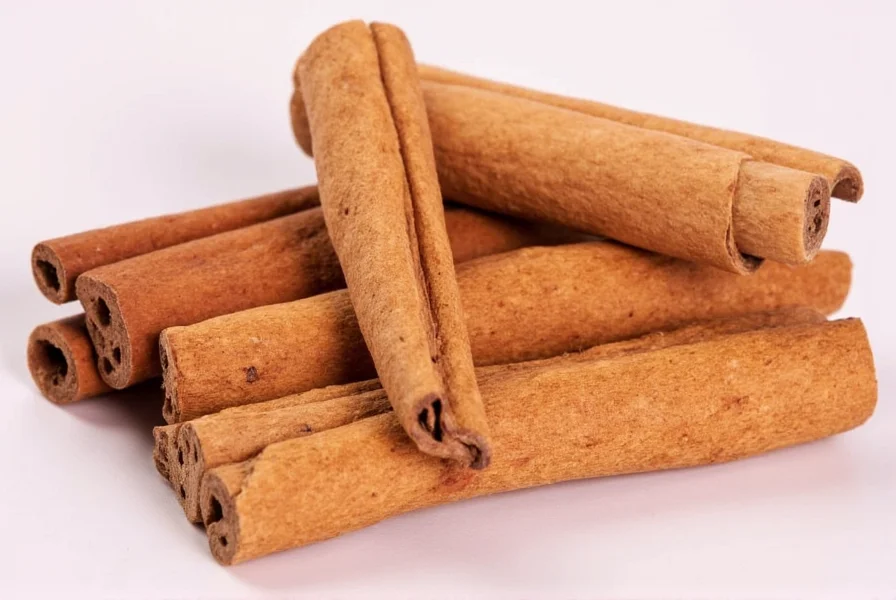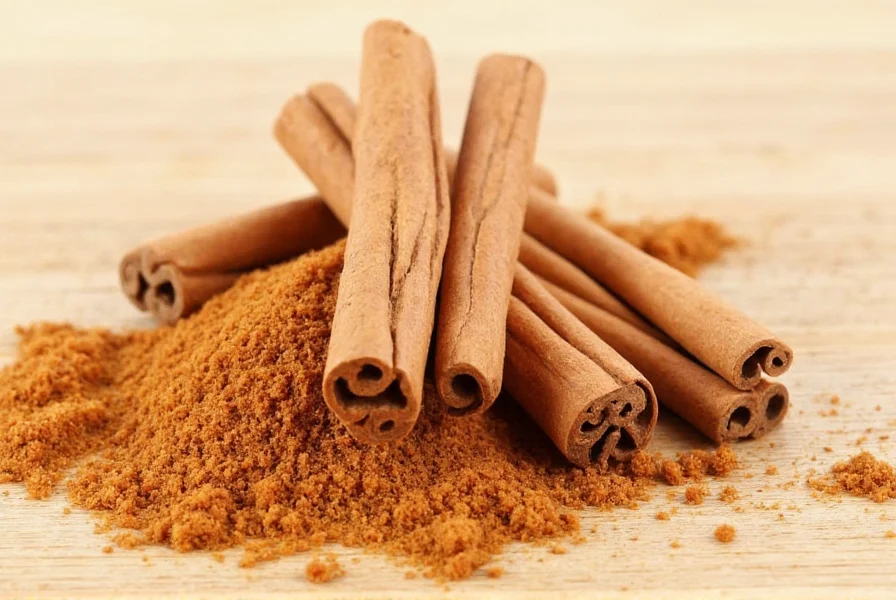When evaluating whether cassia cinnamon is good for you, it's essential to understand both its potential benefits and risks. This common spice, derived from the bark of Cinnamomum cassia trees primarily grown in China and Indonesia, has been used for centuries in traditional medicine and cooking. While research shows promising health properties, there are important considerations regarding its safety profile.
What Is Cassia Cinnamon?
Cassia cinnamon, often labeled simply as "cinnamon" in grocery stores, accounts for about 90% of the cinnamon sold in the United States. It has a stronger, spicier flavor compared to Ceylon cinnamon (sometimes called "true cinnamon") and is typically less expensive. The key difference lies in their chemical composition, particularly regarding coumarin content.

Documented Health Benefits of Cassia Cinnamon
Scientific research has identified several potential health benefits associated with cassia cinnamon consumption:
Blood Sugar Regulation
Multiple studies suggest cassia cinnamon may help improve insulin sensitivity and lower blood sugar levels. A 2013 meta-analysis published in the Journal of Medicinal Food found that cinnamon supplementation significantly reduced fasting blood glucose levels in people with type 2 diabetes. However, the American Diabetes Association doesn't currently recommend cinnamon as a standard treatment due to inconsistent evidence.
Antioxidant Properties
Cassia cinnamon ranks among the most antioxidant-rich spices. These compounds help combat oxidative stress and inflammation in the body, potentially reducing risk factors for chronic diseases. The ORAC (Oxygen Radical Absorbance Capacity) value of cinnamon is exceptionally high compared to many other foods.
Antimicrobial Effects
Research indicates cinnamon possesses antimicrobial properties that may help fight certain bacteria and fungi. This explains its historical use as a food preservative and in traditional medicine for treating infections.
The Coumarin Concern: Understanding the Risks
The primary safety concern with cassia cinnamon is its high coumarin content. Coumarin is a naturally occurring compound that can cause liver damage in sensitive individuals when consumed in excessive amounts over time.
| Cinnamon Type | Coumarin Content (mg/g) | Safe Daily Limit |
|---|---|---|
| Cassia Cinnamon | 2.5-10.0 | Approximately 1 teaspoon (2-4g) |
| Ceylon Cinnamon | 0.004-0.1 | No established limit (much higher) |
The European Food Safety Authority (EFSA) has established a tolerable daily intake (TDI) of 0.1 mg of coumarin per kilogram of body weight. For a 60 kg (132 lb) person, this translates to a maximum of 6 mg of coumarin daily. Given that cassia cinnamon contains between 2.5-10 mg of coumarin per gram, consuming just 1-2 teaspoons daily could exceed safe limits for some individuals.
Cassia vs. Ceylon Cinnamon: Making an Informed Choice
Understanding the difference between these two cinnamon varieties is crucial for making informed dietary decisions:
- Cassia cinnamon has a darker reddish-brown color, thicker bark layers that don't curl tightly, stronger flavor, and significantly higher coumarin content
- Ceylon cinnamon has a lighter tan color, multiple thin bark layers that form a tight scroll, more delicate flavor, and minimal coumarin
While Ceylon cinnamon is generally more expensive and less widely available, it's the preferred choice for regular consumption, especially for those with liver conditions or taking medications metabolized by the liver.
Who Should Limit Cassia Cinnamon Consumption?
Certain populations should exercise particular caution with cassia cinnamon:
- Individuals with pre-existing liver conditions
- People taking medications that affect liver function
- Those consuming cinnamon supplements regularly
- People using cinnamon in therapeutic doses rather than culinary amounts
If you're concerned about coumarin exposure, consider switching to Ceylon cinnamon for daily use while reserving cassia for occasional culinary applications where its stronger flavor is desirable.
Practical Guidelines for Safe Consumption
Based on current research, here are evidence-based recommendations for enjoying cinnamon safely:
- Limited to 1 teaspoon (approximately 2-4 grams) of cassia cinnamon per day for most adults
- Choose Ceylon cinnamon for regular or therapeutic use
- Avoid cinnamon supplements unless recommended by a healthcare provider
- Monitor for potential side effects like mouth sores or digestive issues
- Consult your physician before using cinnamon medicinally if you have health conditions
Conclusion: Balancing Benefits and Risks
Is cassia cinnamon good for you? The answer depends on your consumption patterns and health status. For occasional culinary use in normal food amounts, cassia cinnamon appears safe for most people and may offer some health benefits. However, regular consumption of larger amounts, particularly in supplement form, carries potential risks due to its coumarin content.
Those seeking cinnamon's potential health benefits with minimal risk should consider Ceylon cinnamon as a safer alternative for regular consumption. As with any dietary component, moderation is key, and individuals with specific health concerns should consult healthcare professionals before making cinnamon a regular part of their wellness regimen.

Frequently Asked Questions
Can cassia cinnamon lower blood sugar effectively?
Research shows cassia cinnamon may modestly improve blood sugar control in people with type 2 diabetes, but effects vary between individuals. Most studies used 1-6 grams daily, but the American Diabetes Association doesn't recommend it as a standard treatment due to inconsistent evidence. Always consult your doctor before using cinnamon to manage diabetes.
How much cassia cinnamon is safe to consume daily?
For most adults, up to 1 teaspoon (approximately 2-4 grams) of cassia cinnamon per day is considered safe. This amount typically keeps coumarin intake below the European Food Safety Authority's recommended limit of 0.1 mg per kilogram of body weight. Regular consumption of larger amounts may pose liver health risks for sensitive individuals.
What are the signs of coumarin toxicity from too much cassia cinnamon?
Symptoms of coumarin-related liver issues may include fatigue, loss of appetite, nausea, abdominal pain, and jaundice (yellowing of skin or eyes). These symptoms typically develop with prolonged excessive consumption rather than occasional use. If you experience these symptoms while regularly consuming large amounts of cassia cinnamon, consult a healthcare provider immediately.
Is cassia cinnamon safe for people with liver disease?
People with liver conditions should exercise caution with cassia cinnamon due to its coumarin content. Those with compromised liver function may be more susceptible to potential adverse effects. If you have liver disease, consult your healthcare provider before consuming cassia cinnamon regularly, and consider using Ceylon cinnamon instead as it contains negligible coumarin.
Can I substitute Ceylon cinnamon for cassia in recipes?
Yes, you can substitute Ceylon cinnamon for cassia in most recipes, though you may need to adjust the quantity. Ceylon has a more delicate flavor, so you might use slightly more to achieve similar intensity. For baking and cooking where cinnamon flavor is prominent, you may need 25-50% more Ceylon cinnamon to match cassia's stronger taste. The substitution is particularly recommended for daily consumption or therapeutic use.











 浙公网安备
33010002000092号
浙公网安备
33010002000092号 浙B2-20120091-4
浙B2-20120091-4